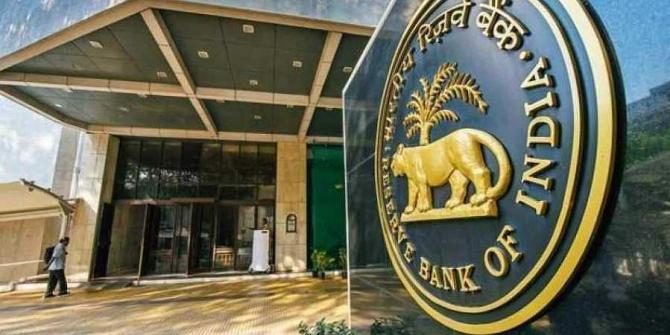How RBI managed to give Rs 1-trillion dividend to govt

The amount paid as dividend was 73.51 per cent higher than FY20’s full-year dividend of Rs 57,127.53 crore.
The Reserve Bank of India (RBI) booked massive gains on its foreign currency sales and needed to provide much lesser for its reserves in 2020-21 (FY21), helping it to carve out a significant Rs 99,122-crore dividend for the government, revealed the RBI’s annual report for FY21.
By doing so, the central bank’s risk buffers have reduced to the bare minimum, which may restrict some of RBI’s scale of operations, and would likely hamper dividend payout for financial year 2021-22, said analysts.
The annual accounts are for nine months ended March 31, 2021 since the RBI changed its accounting year from July-June to April-March from FY21.
Still, the amount paid as dividend was 73.51 per cent higher than 2019-20’s (FY20’s) full-year dividend of Rs 57,127.53 crore.
While income for the year decreased 10.96 per cent in a challenging year, the expenditure also nosedived 63.1 per cent, enabling a higher dividend payout.
The RBI’s balance sheet expanded 6.99 per cent to Rs 57.08 trillion in the year, against 30.02 per cent a year ago.
Currency sales gain
In the period under consideration, gains from ‘foreign exchange transactions’ increased to Rs 50,629.18 crore, from Rs 29,993.22 crore a year ago – a rise of 68.8 per cent.
From 2018-19, the RBI, under the recommendations of the Jalan Committee, started recognising gains from the sale of foreign currency assets at historical weighted average holding cost.
Till then, they were valuing the sales under the weekly revaluation rate, leaving nothing much as gains.
In case of purchases though, any fresh acquisition adds to the weighted average cost.
Ananth Narayan, senior India analyst at Observatory Group, pointed out that the historical weighted average cost of holdings could have been Rs 55.7 per dollar, assuming all foreign currency assets are valued in dollar.
The rupee was at over 70 a dollar in FY21, and therefore, any sales would have reaped rich gains for the RBI.
The total gain for nine months was a whopping Rs 50,629.18 crore.
It is important to note here that the RBI stepped up its foreign currency assets sales from January onwards.
The data released in the RBI bulletins showed that in January and February, the central bank sold $39.9 billion.
In March, it sold a further $25.9 billion.
The gross purchase of foreign currencies does not directly net off the gain from gross sales of currencies since the accounting methodology for both are different.
Rather, say analysts, the accounting has been done in a way that the central bank will always gain or lose much higher in case of sales than what its purchases can net off.
For the curtailed nine months, the RBI gross sold a record $85.2 billion and purchased $140.5 billion.
Contingency buffers at bare minimum
The RBI’s fall in expenditure was led by a lower transfer to the contingency fund.
Now, how much can be transferred to this fund is also determined by the Jalan Committee recommendations.
The committee had suggested that at any time, a contingency risk buffer has to be maintained at 5.5-6.5 per cent of the RBI balance sheet.
The RBI, since 2018-19, has kept the buffer at the lowest level of 5.5 per cent.
Since the RBI transferred a healthy Rs 73,615 crore to the contingency fund in 2019-20, the requirement for transfer was greatly reduced in 2020-21, as the balance sheet grew only 6.99 per cent.
The RBI transferred only Rs 20,710.1 crore, which is a fall of 71.87 per cent.
According to the Jalan Committee rules, the RBI’s capital and reserves (including contingency risk buffer) have to be at least 20.8 per cent of assets.
This share, however, is now at 21.6 per cent, “perilously close to the lower bound of 20.8 per cent”, observed Soumya Kanti Ghosh, group chief economist of State Bank of India.
“Subsequently, even a modest appreciation of rupee, say 1.5 per cent from the current level, will result in a lower limit of risk buffer being breached.
“To sum up, the RBI will be hard-pressed for a larger transfer of dividend in 2021-22,” said Ghosh.
The RBI also benefited from lower employee cost.
The total employee cost for FY21 decreased 46.37 per cent, from Rs 8,928.06 crore in FY20 to Rs 4,788.03 crore in FY21.
The wage cost decrease was due to decrease in accrued liabilities of various superannuation funds in 2020-21 and also the current accounting period being of nine months.
The RBI continued to see pressure on its earnings.
The rate of earnings on foreign currency assets was at 2.1 per cent in FY21, compared with 2.65 a year ago.
The net income from domestic sources decreased 21.91 per cent, mainly on account of decrease in interest income on holding of bonds and an increase in net interest outgo on interest under its liquidity absorption operations as the banking system remained in surplus liquidity mode.
A drain on the RBI finances was underwriting commissions given to primary dealers.
The RBI paid commissions of Rs 642.95 crore to primary dealers in FY21, compared with just Rs 60.9 crore in FY20.
This is “mainly on account of market conditions and increased quantum of government borrowing, reflected in higher risk of devolvement at 9.53 per cent of the gross borrowings (0.51 per cent in FY20)”, the RBI said.
Photograph: PTI Photo
Source: Read Full Article

